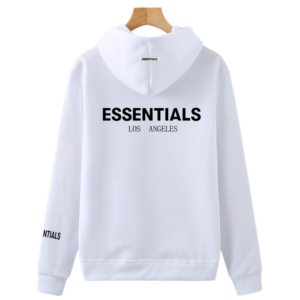From Classic to Bold: Exploring the Legacy of Mountain Dew Code Red
Introduction to Mountain Dew Code Red
Mountain Dew Code Red is more than just a soda; it’s an experience that has sparked passion and nostalgia among fans since its launch. With its vibrant red hue and electrifying taste, Code Red takes the classic Mountain Dew flavor to a whole new level. It captivates those seeking adventure in every sip.
As we dive into the story of this iconic drink, we’ll uncover how it emerged from humble beginnings to become a favorite for thrill-seekers and soda enthusiasts alike. Grab your favorite can as we explore the legacy of Mountain Dew Code Red!
The Creation of a Classic: History and Origin of Code Red
Mountain Dew Code Red made its debut in 2001, capturing the hearts of soda lovers everywhere. This vibrant cherry-flavored variation was a bold move for the Mountain Dew brand, which had primarily focused on citrus flavors.
The idea came from a desire to expand beyond traditional offerings. PepsiCo recognized an opportunity to tap into new markets and demographics. With intense research and development, they crafted a formula that was both sweet and refreshing.
Code Red quickly gained popularity among younger consumers, particularly gamers and thrill-seekers. Its bright red hue became synonymous with energy and excitement. The introduction wasn’t just about flavor; it was about creating an experience.
This innovation marked a significant shift in soft drink culture, paving the way for more adventurous flavors across various brands. As Code Red hit shelves nationwide, it sparked curiosity and transformed how people viewed flavored sodas altogether.
The Bold Flavor Profile of Code Red
Mountain Dew Code Red bursts onto the scene with a vibrant cherry flavor that sets it apart from its citrusy counterparts. This bold choice captivates taste buds, offering a sweetness that’s both refreshing and invigorating.
The tartness of cherry dances on the tongue, creating an experience that’s anything but ordinary. Each sip delivers a perfect balance—sweet yet slightly tangy, hitting just right for those seeking something different.
This striking profile does more than please; it energizes. The carbonation adds to the thrill, making every gulp feel like an adventure in itself. Fans have come to love this unique blend as much for its taste as for its eye-catching color—a vivid red that promises excitement even before you take your first drink.
Mountain Dew Code Red stands out in the lineup not merely as another soda but as an exhilarating treat that sparks joy and nostalgia alike.
Marketing Strategy and Success of Code Red
Mountain Dew Code Red burst onto the scene in 2001, quickly capturing attention with its vibrant packaging and bold flavor. The marketing strategy was as dynamic as the drink itself. PepsiCo targeted a young demographic, using edgy advertisements that emphasized excitement and adventure.
The brand partnered with extreme sports events to align itself with adrenaline junkies. This connection built a community around Code Red, making it more than just a beverage; it became part of an active lifestyle.
Social media campaigns helped fuel its popularity. Fans shared their love for the flavor, creating buzz that traditional advertising couldn’t match. Limited-time promotions and collaborations kept fans engaged while drawing new customers into the fold.
Ambassadors from gaming and music also helped elevate Code Red’s profile. These strategic partnerships turned casual consumers into dedicated fans eager to embrace everything this unique soda had to offer.
How Code Red Inspired Other Flavored Soft Drinks
Mountain Dew Code Red didn’t just carve its own niche; it opened the floodgates for a wave of flavored soft drinks. Its bold cherry flavor captivated taste buds and set new standards in the industry.
Brands quickly took notice. Inspired by Code Red’s success, competitors began experimenting with unique flavor combinations to attract adventurous consumers. The market saw an influx of vibrant red sodas, each trying to replicate that same thrill.
Even smaller brands jumped on this trend, crafting their own fruit-forward beverages. Limited-edition flavors became commonplace as companies aimed to capture the excitement associated with Code Red.
This surge not only diversified options but also encouraged brand loyalty among fans seeking variety. The ripple effects from Mountain Dew’s daring creation can still be felt today, leaving an indelible mark on beverage innovation and consumer preferences alike.
Impact on Pop Culture and Fan Reactions
Mountain Dew Code Red has transcended its status as just a beverage. It’s a cultural phenomenon, embraced by fans across generations. From gaming marathons to extreme sports events, this vibrant drink has become synonymous with adventure and energy.
The brand tapped into the youthful spirit of the early 2000s, resonating with those who craved something different. Its neon-red hue caught attention on shelves and screens alike. The distinct flavor inspired countless memes and online tributes.
Social media buzzed with fan art and challenges that highlighted Code Red’s unique place in pop culture. Gamers often showcased it as their go-to fuel during long play sessions, elevating its status in the gaming community.
Moreover, music festivals have featured it prominently at concession stands, further solidifying its role in youth culture. Mountain Dew Code Red is more than a soda; it’s an experience cherished by many.
Evolution and Changes Over the Years
Mountain Dew Code Red has undergone an intriguing evolution since its launch in 2001. Initially introduced as a limited-time offering, it quickly captured the attention of fans and became a staple in the Mountain Dew lineup.
Over time, variations of Code Red have emerged. Seasonal flavors and limited-edition releases have built excitement among die-hard enthusiasts. Each new iteration brings something fresh while honoring the original formula.
The packaging has also seen changes. From bold graphics to sleek redesigns, these updates reflect shifting consumer preferences and trends in marketing aesthetics.
As health consciousness grew among consumers, Mountain Dew responded by introducing zero-calorie versions without compromising flavor integrity. This shift demonstrates how brands can adapt while maintaining their core identity.
Code Red remains relevant today by consistently engaging with its audience through social media campaigns and collaborations that resonate with younger generations seeking unique experiences.
Conclusion: The Enduring Legacy of Mountain Dew Code Red
Mountain Dew Code Red has etched itself into the hearts of soda lovers around the world. Its vibrant cherry flavor and bold branding have made it more than just a drink; it’s a cultural phenomenon. Since its launch, Code Red has maintained a loyal fan base. The unique taste appeals to those who crave something different in their soft drinks.
This loyalty is reflected not only in sales but also in the passionate community that rallies around it. As time passes, Mountain Dew continues evolving while keeping the essence of Code Red alive. New iterations may come and go, but the original remains cherished by many.
The legacy of Mountain Dew Code Red is undeniable—it represents boldness in flavor and marketing alike. Whether you’re sipping it on game day or celebrating with friends at a party, this classic embodies excitement and adventure in every can.




